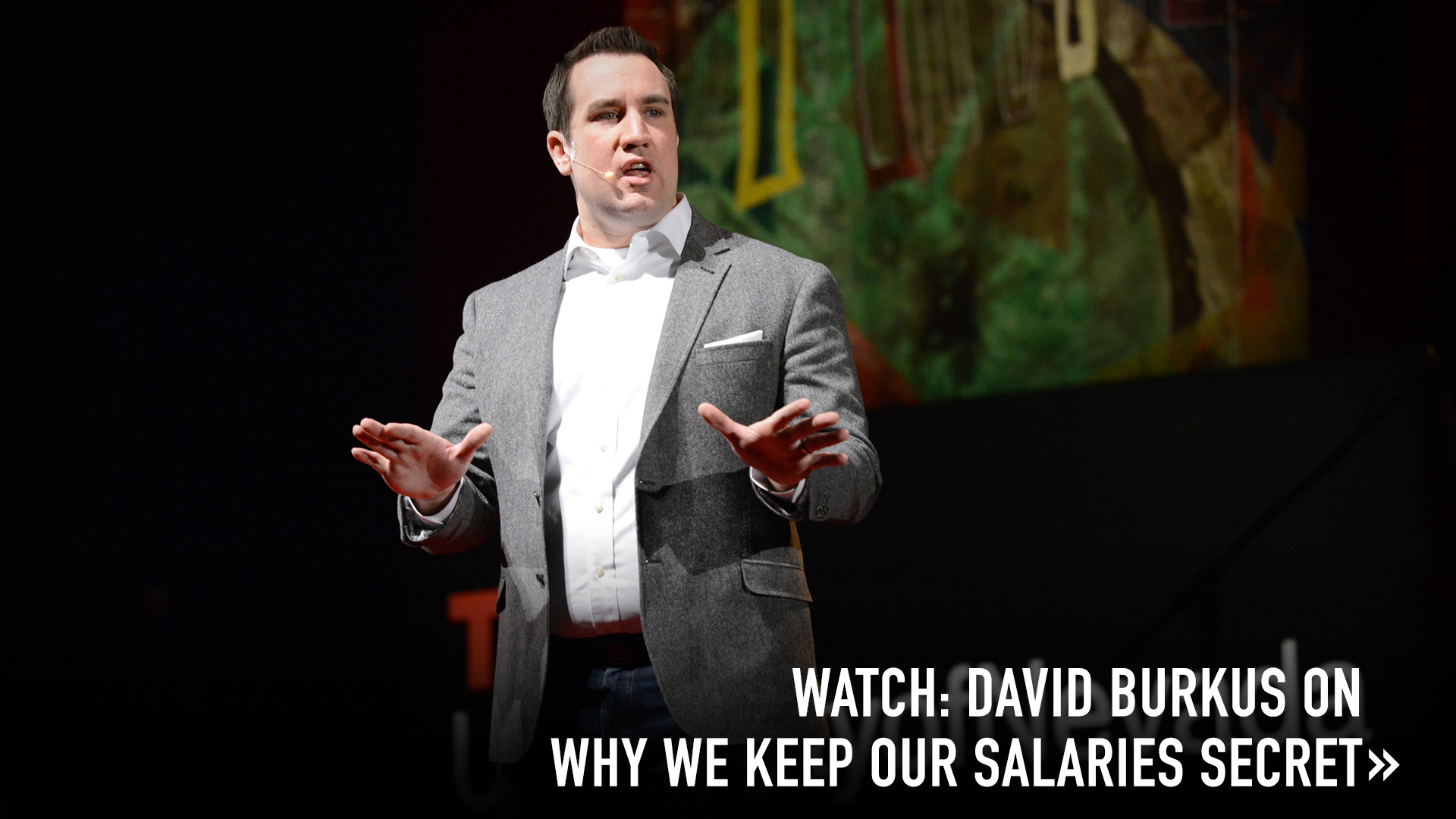
The thought of asking your colleague how much she earns makes you cringe inside, and the same goes for telling her your salary. But pay transparency could benefit employees, organizations and society, says management researcher David Burkus.
How much do you get paid? No need to say it out loud — just keep that number in your head. Now: How much do you think the person sitting next to you at work gets paid? If you don’t know the answer to this question, it’s not surprising. It’s uncomfortable to ask this of your colleague, and most of us are also uncomfortable with the idea of broadcasting our own salaries. But admit it — you really do want to know their salary.
We assume that if everybody knew what everybody got paid, all hell would break loose at work. There’d be arguments and complaints. Some people might even quit. But I’d like to suggest another possibility, that such radical transparency might actually be a company’s biggest virtue. Here’s why.
Pay transparency might actually increase the feelings of fairness and collaboration inside a company. For several years, I’ve been studying business leaders who question the conventional wisdom about how to run a company. Questions about salary keep coming up, and the answers are surprising. For instance, when people don’t know how their pay compares to their peers, they’re actually more likely to feel underpaid — and even discriminated against. In one famous example from many decades ago, the management of Vanity Fair magazine circulated a memo titled “Forbidding Discussion Among Employees of Salary Received.” That memo didn’t sit well with everybody — New York literary figures Dorothy Parker, Robert Benchley and Robert Sherwood, all part of the Algonquin Round Table, stood up for transparency and showed up for work the next day with their salary written on signs hanging from their neck. This leads me to wonder, Why would a company want to discourage pay discussions?
Just think how much better you could negotiate for a raise if you knew everybody’s salary.
Secrecy is a sneaky way for companies to save a lot of money. Keeping salaries secret leads to what economists call “information asymmetry” — a situation where one party has much more information than the other. Just think how much better you could negotiate for a raise if you knew everybody’s salary. Most employees have no idea how their pay compares to their peers. In a 2015 survey of 70,000 employees, two-thirds of those paid at the market rate said they felt they were underpaid.
Pay secrecy also makes it easier to ignore the discrimination that’s present in the market today. In a 2011 report from the Institute for Women’s Policy Research, the gender wage gap between men and women was 23 percent. This is where that 77 cents on the dollar that so often gets talked about in the press comes from. But in the US federal government, where salaries are pinned to certain levels and everybody knows what those levels are, the gender wage gap shrinks to 11 percent. If we really want to close the gender wage gap, maybe we should start by opening up the payroll.
Some businesses post employees’ salaries for anyone, including people outside the company, to see; others keep the information inside the company.
Letting people know what you make might feel uncomfortable, but isn’t it less uncomfortable than wondering if you’re being discriminated against or being paid fairly? Openness remains the best way to ensure fairness, and pay transparency does that. Business leaders have been experimenting with sharing salaries. Dane Atkinson is one example — he’s a serial entrepreneur who started many companies under conditions of pay secrecy and even used it to pay two equally qualified people dramatically different salaries, depending on how well they could negotiate. Dane saw the strife that resulted from this, so when he started his newest company, SumAll, he committed to salary transparency from the beginning. The results have been amazing.
In study after study, when people know how they’re being paid and how that pay compares to their peers’, they’re more likely to work hard to improve their performance, more likely to be engaged, and less likely to quit. Dane’s company is not alone; pay transparency is the norm at technology startups like Buffer and at Whole Foods, where your salary is available on the company intranet, along with performance data for the store and for your department.
Pay transparency can take different forms — it’s not one size fits all. Some businesses post employees’ salaries for anyone, including people outside the company, to see; others keep the information inside the company. Some post their formula for calculating pay, and others post the pay levels for their staff. We can all take greater steps towards pay transparency. For those of you that have the authority to move forward towards transparency: it’s time to move forward. And for those of you that don’t have that authority, it’s time to stand up for your right to. So how much do you get paid? And how does that compare to the people you work with? You should know. And so should they.













